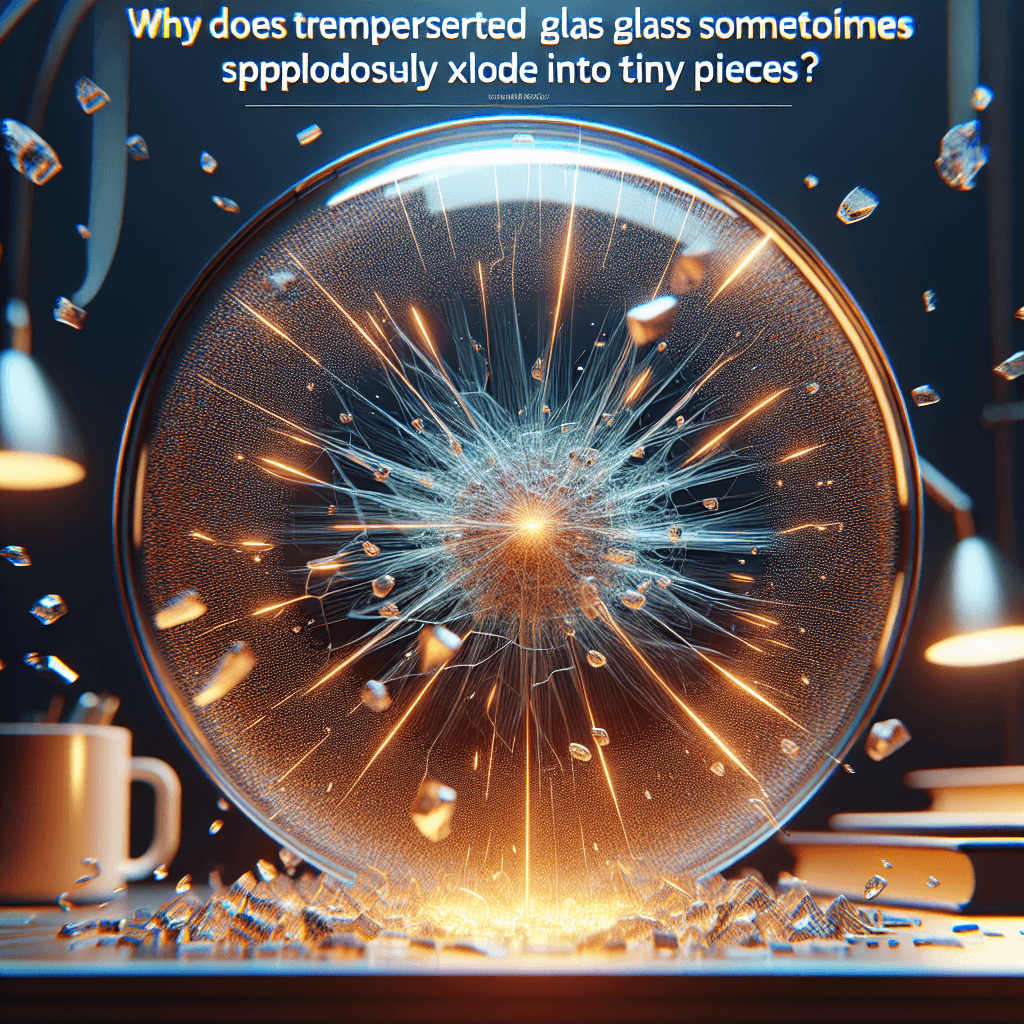Why does tempered glass sometimes spontaneously explode into tiny pieces
Discover the hidden paradox of tempered glass: the very process that makes it incredibly strong is also what can cause it to spontaneously explode into a thousand pieces.


Too Long; Didn't Read
TLDR: Tempered glass is made with high internal tension, which is why it shatters into tiny, safer pieces. Spontaneous explosions happen when a microscopic impurity, often nickel sulfide, gets trapped inside during manufacturing. Over time, this impurity expands and creates an internal pressure point that eventually causes the entire pane to fail catastrophically.
The Shattering Mystery: Why Does Tempered Glass Sometimes Spontaneously Explode?
Imagine the scene: you're relaxing in your living room when suddenly, a loud bang echoes from the bathroom. You rush in to find your glass shower door has shattered into thousands of tiny, pebble-like pieces. No one touched it, nothing hit it. It seems to have simply exploded on its own. While it sounds like something out of a paranormal movie, this phenomenon, known as spontaneous breakage, is a very real, albeit rare, event. Tempered glass is all around us—in our car windows, oven doors, and tabletops—designed for our safety. So why does this "safety glass" sometimes fail so dramatically? This post will explore the fascinating science behind why tempered glass sometimes spontaneously explodes.
The Making of a "Safety" Glass
To understand why tempered glass breaks the way it does, we first need to look at how it’s made. Unlike standard, or annealed, glass which shatters into large, dangerous shards, tempered glass is created through a process of extreme heating and rapid cooling called "quenching."
The glass panel is heated to over 600°C (1,112°F) and then blasted with high-pressure cold air. This process cools the outer surfaces of the glass much more quickly than the center. As the inside cools, it tries to pull back from the already hardened outer surfaces. The result is a pane of glass with a highly compressed outer layer and a core that is in a constant state of tension. This internal stress is the secret to its strength—making it four to five times stronger than regular glass—and its signature "dicing" fracture pattern when it does break.
The Invisible Flaw: Meet Nickel Sulfide (NiS)
The overwhelming majority of spontaneous tempered glass breakages can be traced back to a microscopic culprit: Nickel Sulfide (NiS) inclusions. These are tiny particles that can become trapped in the glass during its initial manufacturing from raw materials. While manufacturers have stringent quality controls, these minuscule contaminants can occasionally make their way into the final product.
During the intense heat of the tempering process, the NiS particle is "frozen" in a high-temperature crystalline state. Over months or even years, as the glass experiences normal, everyday temperature fluctuations, this tiny particle attempts to revert to its more stable, low-temperature state.
The critical issue is that this phase change causes the Nickel Sulfide particle to expand in volume by about 4%. While this sounds insignificant, this expansion inside the high-tension core of the glass acts like a tiny, internal hammer. It creates immense, localized stress that pushes outward against the glass. If this internal pressure becomes too much for the glass to handle, it triggers the catastrophic release of all the stored energy, causing the entire pane to shatter instantly.
Are There Other Triggers?
While NiS inclusions are the primary cause of true spontaneous breakage, other factors can lead to an unexpected shatter that might seem spontaneous.
- Minor Edge Damage: Tempered glass is most vulnerable at its edges. A tiny, unnoticed chip or crack sustained during shipping or installation can create a stress concentration point. Over time, vibrations or slight thermal changes can cause this flaw to propagate, leading to a sudden failure.
- Improper Installation: If the glass is installed in a frame that is too tight or puts uneven pressure on the pane, this constant stress can eventually lead to breakage. Building settling can also exert new forces on an installed glass panel.
- Extreme Thermal Stress: Although tempered glass has excellent thermal resistance, a very rapid and significant temperature change across the glass surface can, in rare cases, cause it to break. For example, splashing very hot water onto a cold section of a glass door.
A Safe Failure by Design
The sudden, loud explosion of tempered glass can be alarming, but it's crucial to remember that this behavior is a key feature of its safety design. The energy stored within the glass is released in a way that creates thousands of small, relatively harmless, blunt-edged pieces instead of large, razor-sharp shards. While the risk of spontaneous breakage from Nickel Sulfide is extremely low—industry experts often place the odds at around 1 in 10,000 for standard tempered glass—it is an inherent characteristic of the material. Understanding the science behind this rare event demystifies the "explosion" and highlights the incredible physics that makes tempered glass a safe and reliable product in our daily lives.


